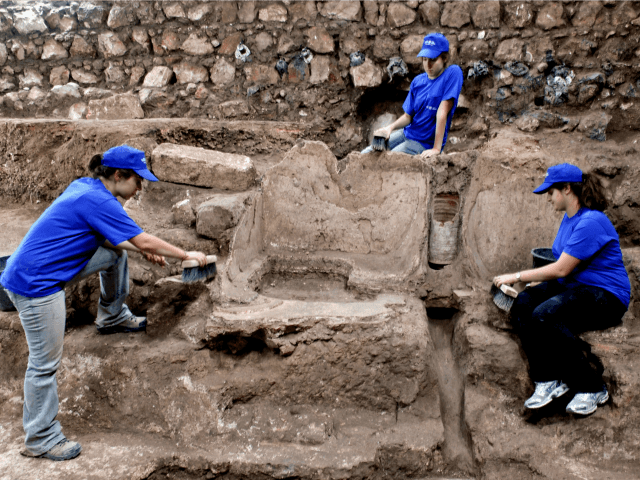TEL AVIV – The birthplace of Jesus’ apostles Peter, Andrew and Philip has been found in Israel, experts said.
The lost Roman city of Julias, formerly the village of Bethsaida, was uncovered during excavations last month at el-Araj on the northern shore of the Sea of Galilee by archaeologists from the Kinneret Institute for Galilean Archaeology at Kinneret College, Israel and Nyack College in New York.
“The results of this season’s excavation indicate that el-Araj should now be considered a leading candidate for the lost city of Jesus’ apostles,” the excavation team said in a statement to Fox News.
“There are indications that we’re excavating Bethsaida-Julia – we have to continue digging to confirm and clarify,” Prof. Steven Notley of Nyack College, the dig’s academic director, told Fox News. “This is really one of the few [biblical sites] that has remained lost.”
Julias was built around 30 AD on the ruins of Bethsaida – where the Gospel of John says Peter was born – according to the Jewish historian Josephus Flavius. In the New Testament, Bethsaida was home to Jesus’ apostles Peter, Andrew and Philip. Jesus also healed a blind man at Bethsaida, according to the Gospel of Mark.
Until now, archaeologists mostly believed that el-Araj remained unpopulated during the Roman period. The recent excavations that unearthed – among other artifacts – coins and pottery proved otherwise. In addition, a Roman-era wall, assumed to have been part of a bathhouse, was discovered beneath a Byzantine floor – some 692 feet below sea level.
The presence of a bathhouse indicates that the area could have once been the city of Julias.
“The Roman layer was buried at a certain period by these sediments derived from the nearby outlets of the Jordan River and Meshushim stream,” Prof. Noam Greenbaum of Haifa University, who participated in the excavation, said. “We hope to deepen and extend our study in the future in order to clarify the full picture.”
The Byzantine structure at el-Araj also offers a fascinating glimpse into the site’s biblical past. Small gilded glass blocks called tesserae that form part of a mosaic were found, suggesting that the building was once an important church. Archaeologists note that Willibald, the bishop of Eichstatt in Germany, visited the Holy Land in 725 A.D., and described visiting a church at Bethsaida built over the remains of the house of apostles Peter and Andrew. “It may well be that the current excavations have unearthed evidence for that church,” explained the archaeologists in their statement.
Other archaeologists have been looking to prove that the nearby site of e-Tell is the location of Bethsaida-Julias.
Excavations at el-Araj will start again in June 2018. “We’re looking right now at trying to do another five seasons,” said Notley.
According to Dr. Mordechai Aviam, who is also leading the dig, the discovery will no doubt make waves, especially among researchers of early Christianity, the New Testament, the history of the land of Israel and the Jewish Galilee in the Second Temple period.

COMMENTS
Please let us know if you're having issues with commenting.